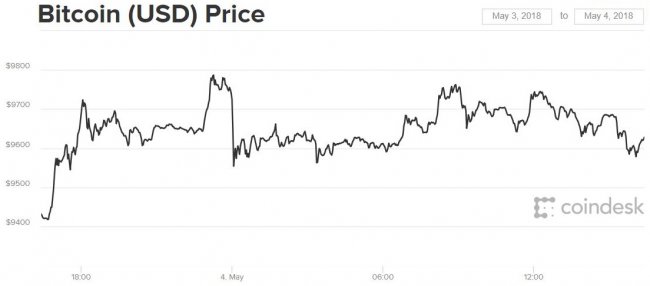Партнерская программа казино Slotman – Heroic AffiliatesПартнерская программа Heroic affiliates предлагает рекламировать новое онлайн казино Slotman, открывшееся в 2020 году. Казино работает на платформе SoftSwiss, весь софт – лицензионный. Регистрация в партнерке vk.cc/atN4fo Основные плюсы: 48 игровых провайдеров (см. ниже), более 1200 игр; несколько приветственных бонусов для новых клиетов; привлекательная бонусная программа для постоянных игроков: reload, поинты, фриспины, кэшбэк, турниры; мультивалютность; множество платежных методов, в том числе и криптовалюты. Провайдеры Slotman NetEnt, BetSoft, Yggdrasil Gaming, Evolution Gaming, Quickfire, 1X2 Gaming, Playson, Igrosoft, Play n GO, Endorphina, BGaming, ELK Studios, Big Time Gaming, Habanero, Belatra Games, GameArt, Amatic Industries, Booming Games, Evoplay, Spinomenal, Iron Dog Studio, Casino Technology, MrSlotty Games, LuckyStreak, Booongo, Red Tiger Gaming, Platipus Gaming, Nolimit City, August Gaming, Nucleus Gaming, Betradar, Microgaming, Quickspin, Thunderkick, Push Gaming, Relax Gaming, Blueprint Gaming, Ezugi, EGT, iSoftBet, Wazdan, Authentic Gaming, Vivo Gaming, Merkur Gaming, Leap-Gaming, Playreels, Betradar, Fantasma Games, Pragmatic Play, Playtech. ГЕО – страны постсоветского пространства.Как стать партнером? Перейти на сайт vk.cc/atN4fo Указать источники трафика. При этом наличие сайта для участия в партнерской программе не обязательно. Можно подавать заявку имея тематический блог (о казино) или сообщество в соцсетях, канал на видеохостинге. А также принимается трафик с пушей, баннеров, кликандеров, попандеров, тизерок, инап, email рассылок и т. д. Ожидать когда с вами свяжется менеджер партнёрки для уточнения условий сотрудничества. После активации учетной записи аффилейт получает доступ к маркетинговым материалам и статистике. Баннеры в партнерке Heroic affiliatesДля начала работы партнеру необходимо создать новую кампанию и выбрать промо: текстовые ссылки, баннеры различных размеров (jpeg, gif, png) на английском или русском языке, лендинги. Регистрация в партнерке vk.cc/atN4fo Модели работы RevShare Доход Оборот, € Оборот, BTC 25% 0 – 1000 до 0,11 30% 1000 – 2500 0,11 – 0,28 35% 2500 – 5000 0,28 – 0,55 40% свыше 5000 более 0,55 Отрицательный баланс не переносится на следующий отчетный период, но при этом admin fee будет составлять 40%. При стандартных условиях admin fee – 35%. Для крупных партнёров возможны индивидуальные условия. Регистрация в партнерке
For many, it's been a years-long pipe dream: Ultra-fast, lag-free Internet that comes to your PC or smartphone via satellite instead of a wire into your home. Facebook, Google and even SpaceX have all explored the idea, partly in hopes of selling broadband access to a growing market with enormous potential — the developing world.
But now, a former Googler and friend of Elon Musk has beaten them all to the punch, becoming the first to receive permission to actually build a next-generation satellite Internet service that targets U.S. customers. If it takes off, the project could benefit Americans nationwide by providing broadband anywhere in the United States, particularly in rural areas where it can be difficult to provide fast Internet connections using traditional ground-based cables.
At the heart of Greg Wyler's new network are a fleet of 720 satellites, all orbiting the earth at an altitude of roughly 745 miles. The first satellites would launch next year, and service could start as early as 2019. On Thursday, federal regulators voted to give Wyler and his company, OneWeb, approval to use the airwaves that will beam the Internet down to earth.
Satellite Internet services are available now. But today's technology is slow, expensive and largely out-of-reach for individual consumers. For a connection barely fast enough to support Netflix, users can spend up to $200 a day — making it realistic only for corporate customers or, in some cases, relief workers responding to natural disasters where connectivity is a must.
By contrast, the next generation of satellite Internet services promise to reduce lag by bringing the satellites closer to earth. By placing them in low-earth orbit instead of geostationary orbit, Internet data will spend less time in transit — leading to a smoother, faster Internet experience.
OneWeb may have been the first to apply for FCC approval, but it wasn't the last — and the agency expects to greenlight more projects, said Chairman Ajit Pai.
"It is our hope that in the future years to come, Americans will be able to use these networks when they're in the sky to make their own destiny," he said.
In 2007, Wyler tested the concept by launching a similar satellite network aimed at business customers. That venture, known as O3b Networks, now has 12 satellites in medium orbit, about 5,000 miles high. The company boasts that they are capable of providing speeds of 1 Gbps — as fast as Google Fiber — with less lag than what you'd see with just a handful of satellites placed higher up.
But reducing lag at lower orbits comes with a tradeoff: You need more satellites. At low-earth orbit, the satellites are whipping around the globe rather than permanently pointing at one spot, as a geostationary satellite would. And that's why OneWeb's new broadband project is planning for hundreds of satellites.
SpaceX, meanwhile, has even more ambitious plans for 4,400 satellites in low-earth orbit. It, along with 10 other entities, submitted plans to the FCC last year for approval. The FCC said Thursday that if those companies also receive approval, the government will apply exactly the same expectations to them as it is to OneWeb.








